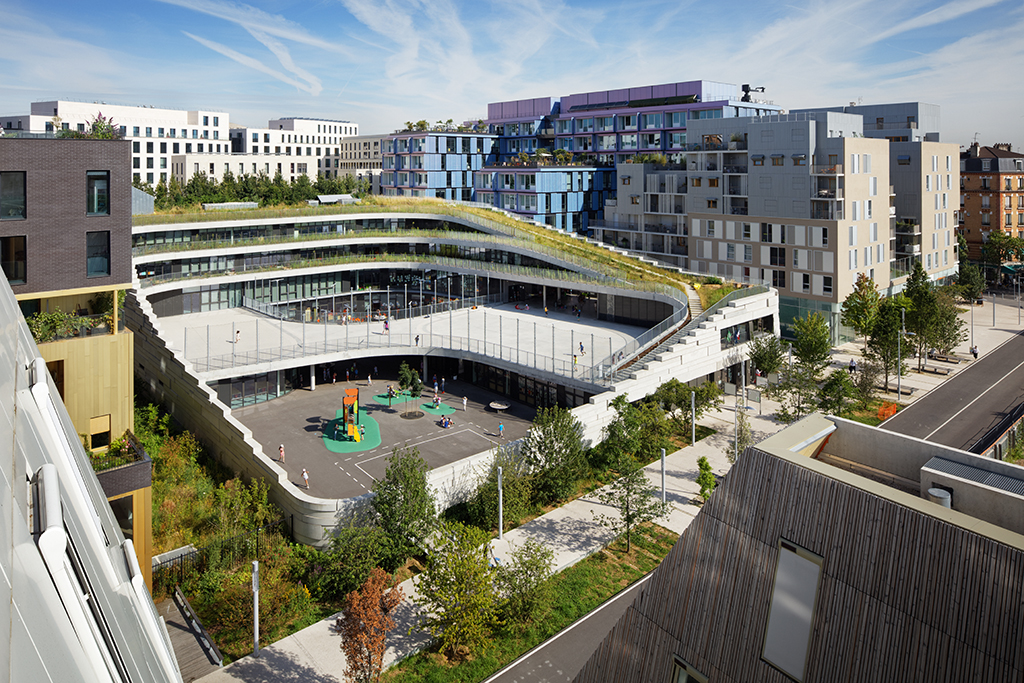Ramping up the green. In one Boulogne school, Chartier Dalix chose to “integrate biodiversity”

Should vegetation-induced indigestion make us reject out of hand all initiatives aimed at bringing back nature into our cities? Sometimes the architects who crown 3D’s with agricultural greenhouses are the same ones who propose more subtle versions of “integrating biodiversity”. In 2014, Pascale Dalix and Frédéric Chartier completed a school in Boulogne-Billancourt where this green vocation isn’t obvious. Today, it forms the basis of the teaching team’s learning programme. Looking back.
L’Architecture d’Aujourd’hui: With Franklin Azzi and Hardel-Le Bihan Architectes, you recently won the project to overhaul the Tour Montparnasse in Paris, in which you incorporate, amongst other features, an agricultural greenhouse. Whilst some are rebelling against this trend to “green up” architecture, you stand up with an approach aiming at “integrating biodiversity”. Could you explain it?
Pascale Dalix and Frédéric Chartier: The built environment has very often been pitted against the world of nature. Even if the densification of towns and cities at various times have altered the approach to and composition of green spaces, most urban designs continue to distinguish those two worlds: stone on the one hand and the living on the other. But hasn’t the time come to review this opposition between cities and nature in order to create a true quality of life in ours cities? We based our design for the ”R.inventer Paris” project on Rue Orderer on that very principle of recreating a new alliance where nature and man’s everyday life are blended together, through the offer of contact that is physical, olfactory, sensual… This proximity creates a new symbiosis that opens up different paths to urban practices.
Read the full interview of the architects by Emmanuelle Borne in AA 422, December 2017.

